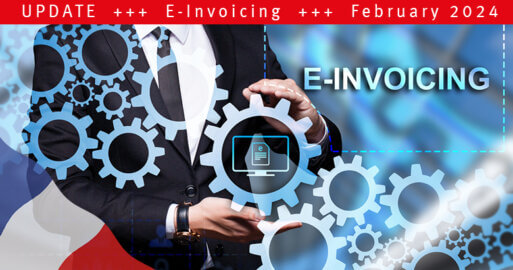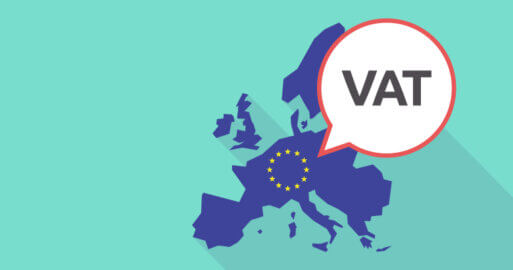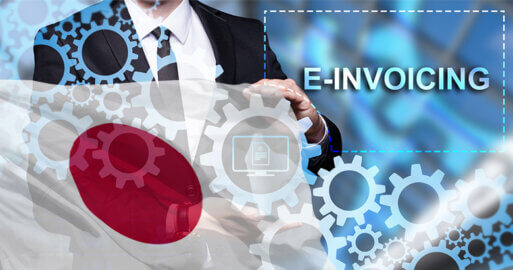Introduction to e-Invoicing and the use of PEPPOL in Scandinavia
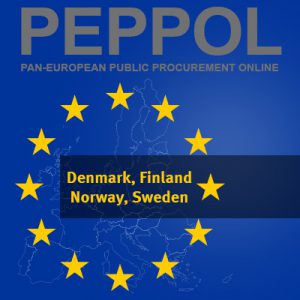 E-Invoicing has been in use in Scandinavia since the 1990’s – largely driven by process simplifications and cost efficiency. Thus Scandinavia can be regarded as the pioneer in e-Invoicing in Europe and is now clearly Europe’s leading region with an e-invoicing rate of over 40% on all invoices.1
E-Invoicing has been in use in Scandinavia since the 1990’s – largely driven by process simplifications and cost efficiency. Thus Scandinavia can be regarded as the pioneer in e-Invoicing in Europe and is now clearly Europe’s leading region with an e-invoicing rate of over 40% on all invoices.1
In Scandinavia a provider model was the approach for exchanging e-invoices and other electronic procurement documents between suppliers and the public administration. For this approach standardized formats and national registers of all participating business partners were the keys to success. But cross-boarder exchange of electronic documents required interoperability between national providers and registers. This experience led to the Pan-European Public Procurement OnLine PEPPOL project which focuses on cross-boarder e-procurement in Europe, too. Since then, the PEPPOL usage is not only increasing in European countries. Even further abroad, in Singapore and US, PEPPOL is on the menu.
Further information about PEPPOL can be found on the information page of the Open PEPPOL Initiative or the SEEBURGER Blog PEPPOL in the EU .
The importance of PEPPOL for e-Invoicing in Denmark, Finland, Sweden and Norway
In Scandinavian countries local e-invoicing formats and exchange systems, usually accessed via providers, have been established many years ago. E-invoicing between suppliers of contracting parties from the public administration has become the standard of today – among many other electronic communications with the public administration in procurement or other areas.
This well adopted electronic invoicing is used in business to business exchange, too. The different national standards, providers and platforms exchange even invoices between the countries. This requires translating formats, and frequently updating national registers of invoice recipients plus exchanging information between the countries and providers for interoperability.
Especially the challenges in interoperability across countries led to PEPPOL. With E-Invoicing there are two important aspects, the data format and the communication. PEPPOL defines its own data format called PEPPOL-UBL; however in all Scandinavian countries there were different local formats defined in the past. The PEPPOL network can transfer these formats – if in line with PEPPOL specifications, too, over the so called PEPPOL Access Points.
PEPPOL-UBL is a widely used standardized format and is an alternative to the various local data formats while the PEPPOL network makes the transport easier across borders. A European-wide standard enables cross boarder e-procurement for the public sector which increases choice and broadens the market for suppliers.
Denmark
Business-to-Government (B2G) E-Invoicing is mandatory in Denmark since 2005. Denmark relies on its own platform ‘NemHandel’ and the UBL format ‘OIOUBL (national UBL 2.0 standard)’, which is specific to Denmark. Suppliers of public authorities can send securely encrypted invoices to their public sector customers over the internet network ‘NemHandel’.
The Danish system is architecturally very similar to PEPPOL, and it is based on the 4-Corner-Model consisting of Transmitter with a Transmitter Access Point and a Receiver with a Receiver Access Point.
Suppliers connected to the NemHandel network can access recipients over the PEPPOL network which is already connected to the NemHandel network for outbound transactions.
It comes as no surprise that the Danish Digitalization Authority supports and promotes the PEPPOL standard for better electronic integrations throughout the EU. The agency plans to connect PEPPOL to NemHandel for inbound transactions soon. This move will grant easy access of foreign suppliers to the Danish Public institutions on the NemHandel network in the near future. In the long run PEPPOL shall even replace the NemHandel network.2
Access point providers, connecting invoice senders to the NemHandel platform, offer them usually business to business e-invoicing services, too.
Finland
Business-to-Government (B2G) E-Invoicing has been mandatory in Finland since 2010. As with PEPPOL and in Denmark, Finland relies on a 4 corner model.
In the country-specific formats Finvoice or TEAPPSXML, electronic invoices can be sent to the public administration in Finland. The Finvoice format is also the most widely used format for B2B invoicing in Finland.
Even if PEPPOL is not among the permitted standards for e-invoicing towards public administration in Finland for now, we expect this will follow in the future.
Finland has gone pretty far in the adoption of e-invoicing when it comes to B2B. This has been enabled by a couple of factors such as:
- Creating forums for e-invoicing service providers that has resulted, among others, in the Tieke list which is a library where users can see what service provider and format a particular company is using which makes the onboarding of new trading partners easier and opens up for self-service capabilities.
- Cooperation between e-invoicing service providers through so called interoperability agreements in which service providers, typically without charging each other, allows for e-invoices to be exchanged between them. This creates a local network in which two companies can send and receive invoices between them even though they are behind different service providers.
Sweden
As early as the 1990’s, the authorities in Sweden started with E-Invoicing for receiving invoices in order to increase administrative efficiency and to reduce costs. The Single Face To Industry (SFTI) initiative enables public procurement in modern, efficient electronic form.
In 2006, standardization continued with other Scandinavian neighbors before SFTI became an active member of CEN BII and the PEPPOL project. And the success is impressive: today in Sweden more than 60% of federal authority invoices and about 50% of all invoices to local public invoice recipients are electronic.
The first data format was Svefaktura version defined back in 2004. An alternative was the SFTI Fulltextfaktura which is an Edifact D96A invoice aligned to GS1 EANCOM specifications. The use of PEPPOL over the legacy formats is meanwhile encouraged also because it enables cross-border e-procurement for the public sector.
Encouraged by this success, the Swedish government is now introducing the obligation to E-Invoicing to public recipients as of 1 April, 2019, and expects cost savings of around EUR 165 million per year as a result.
- Obligation for all suppliers to send invoices to public sector companies electronically!
- All invoices without exceptions must be issued electronically. This means e. g
that there is no minimum value from which invoices are to be sent electronically. - PEPPOL BIS Billing 3.0 will be mandatory for buyers in the public sector from 1 April, 2019.
- Suppliers sending paper invoices must expect penalties.
Sweden has, just as Finland, also adopted e-invoicing for B2B to quite a large extent, at least when it comes to medium and large size enterprises. The most common format is the simple e-invoice Svefaktura 1.0 which over time has been updated to newer, more extensive versions Svefaktura BIS 5A 2.0 (2014), in which latest one is PEPPOL BIS Billing 3.0 (2018).
Even though there is no such thing as a Tieke list like in Finland the cooperation between service providers with interoperability agreements is well adopted in Sweden.
Norway
In Norway, B2G E-Invoicing has been mandatory since 2011 (willingness to receive) and 2012 (sending capability).
Domestic suppliers and central authorities both need to use the national EHF format (Elektronisk handelsformat or Electronic Commerce Format). But the current version EHF Invoice and credit note v2.0 will soon come to its end. It is optional to receive for public enterprises until 31 December, 2019.
The reason is that public sector entities are obliged to receive and process e-invoices in the new EHF Billing 3.0 format by April 1, 2019 3. All foreign suppliers of the public sector in Norway must already use the new EHF Billing 3.0 by April 1, 2019 while the domestic ones might use the old format until the end of 2019.
The new EHF Billing 3.0 format is basically the PEPPOL BIS 3.0 specification, as it covers all Norwegian requirements.4 EHF Billing 3.0 or PEPPOL BIS 3.0 are referenced in Norwegian under the name EHF Fakturering 3.0.
The continuously increased use of PEPPOL-based solutions in Norway is the reason why PEPPOL now can be used to send invoices to most of the private companies in Norway, too, as long as they are registered in the “ELMA” (the Norwegian Service metadata provider “SMP”).
The use of PEPPOL in Norway has achieved the following results by the beginning of 2019:
- 45 productive PEPPOL Access Points
- 121,000+ PEPPOL receivers
- 8+ Mio transactions monthly.
Norway is the most advanced Scandinavian country in the area of e-invoicing. It has remarkably demonstrated how the obligation of B2G e-invoicing can impact the adoption of e-invoicing in B2B. Even without mandating it, the B2B e-invoicing followed – solely based on rational economic decisions.
SEEBURGER Cloud Services enables you to quickly and easily send EU-compliant invoices to public administrations and other PEPPOL partners in the Nordics.
For an easy and safe implementation it is recommended to work with a partner who understands the e-invoicing requirements in Scandinavian countries, integration of ERP systems, electronic formats and highly scalable cloud services deeply. A partner with experience will help you with enable you for global e-invoicing in a competent and comprehensive way – everything supplied from a single source.
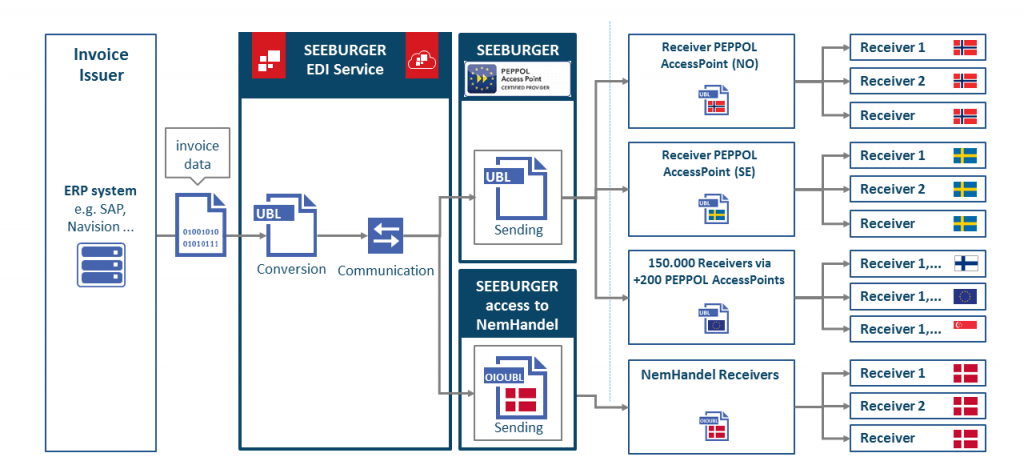
SEEBURGER Cloud Services provide a pre-configured service off the shelf – all you need do is to connect your ERP system and to transfer the invoice data in a standard interface format. These cloud services work with any ERP system and include legally compliant archiving for Denmark, Finland, Sweden and Norway.
Benefits of using SEEBURGER E-Invoicing Cloud Services for the Nordics are:
- Experienced – You can make decisions how to handle your requirements benefiting from SEEBURGER’s E-Invoicing experience
- Cross-border comprehensive – We support the necessary E-invoicing data formats in these countries which enables you to be part of the e-procurement ecosystem in the countries you want to be a B2G supplier
- Easy – You just need a single connection from your ERP-system to handle ALL Scandinavian E-Invoicing requirements
- Integrated – SEEBURGER, as certified PEPPOL Access Pointforwards the compliant invoices to the respective public administrations or private businesses in these countries. You don’t need to worry about country specific CIUS in UBL.
- Flexible – You have the option for all other global E-Invoicing requirements to use SEEBURGER Cloud Services also
1 2017 Billentis market survey
2 https://en.digst.dk/
http://www.folketingstidende.dk/RIpdf/samling/20181/lovforslag/L48/20181_L48_som_fremsat.pdf
3 This information has been published by Difi (“Direktoratet for forvaltning og ikt” or in English “Agency for Public Management and eGovernment” in Norway) on December 20, 2018. For more information see https://vefa.difi.no/ehf/announcement/2018-12-20-new-date-for-mandatory-ehf-billing-3.0/; Jan, 2019.
4 Difi has included Norwegian rules in PEPPOL BIS Billing 3.0. That is why there is no Norwegian-specific usage specification of the PEPPPOL BIS 3.0 required. For more information see https://vefa.difi.no/ehf/g3/billing-3.0/norway/, Jan 2019
Thank you for your message
We appreciate your interest in SEEBURGER
Get in contact with us:
Please enter details about your project in the message section so we can direct your inquiry to the right consultant.
Written by: Gerrit Onken
Gerrit Onken has been at SEEBURGER since 2010 as a product manager for software applications and for electronic data exchange services for the business sector. He focuses on solutions for SAP, electronic invoicing (e-invoicing) and innovations for digitalizing business and technical processes for globally-active customers. Originally a banker, Gerrit Onken went on to graduate in business administration, majoring in industrial management and business informatics. After working in the financial sector, he worked as a manager and project manager from 2004 to 2010 for one of the top five corporate consultancies, working with international BPOs in the banking and automotive industries.



